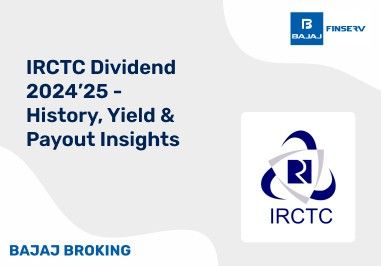BAJAJ BROKING
Ather Energy IPO is Open!
Open a Free Demat Account
Trade Now, Pay Later with up to 4x
Track Market Movers Instantly
What is the Peak Margin Penalty?
The peak margin penalty is a regulation implemented by the Securities and Exchange Board of India (SEBI). Its main purpose is to control excessive leverage in the stock market and protect retail investors from taking on undue risks. Leverage, in simple terms, refers to the practice of using borrowed money to amplify potential returns. While leverage can enhance gains, it also magnifies losses, making it a risky strategy.
Now, you might wonder how the peak margin penalty works and what triggers it. The regulation requires traders to maintain a minimum amount, known as margin, in their trading accounts when executing intraday trades. The margin acts as a safety net, ensuring that traders have sufficient funds to cover potential losses. If the margin falls below the prescribed threshold during intraday trading, the peak margin penalty is levied.
What does this mean for you as a trader? Let’s explore the peak margin penalty in more detail to help you understand its implications better.
Why Was the Peak Margin Penalty Introduced?
SEBI introduced the peak margin penalty in 2020 to limit intraday leverage in trading, capping equity leverage at 5x. This penalty, active by September 2021, involved capturing snapshots of traders’ positions throughout the day, with a penalty for insufficient margin. While equities had fixed margin requirements, F&O trading saw dynamic SPAN margin updates based on volatility changes.
Addressing concerns, SEBI ruled in May 2022 that no margin penalty would apply if the starting-of-the-day (BOD) margin was met, even if SPAN increased due to intraday volatility. This eliminated frequent SPAN updates during the day. Yet, a new issue emerged: while peak margin penalties were resolved, end-of-the-day (EOD) penalties surfaced for failing to maintain sufficient margin by day’s end. This led to penalties even if initial margin requirements were met. An example illustrated below shows how a Nifty futures position could trigger an EOD penalty due to increased margin requirements by day’s end.
Consider a scenario where a Nifty futures position required an initial SPAN margin of ₹ 100,000. If market volatility caused the margin to increase to ₹ 100,000 lakhs by the end of the day and the account lacked the additional ₹ 10,000, an EOD penalty would be incurred specifically for the ₹ 10,000 shortfall, even though no upfront margin penalty was triggered.
To tackle this challenge, SEBI released an additional circular in February 2023, authorising the computation of both peak and end-of-the-day (EOD) penalties based on the beginning-of-the-day (BOD) margin files. This directive came into effect on May 2, 2023. This change meant that if sufficient margin was present upon entering a position and the margin increased during the trading day, no penalty would be imposed on that trading day. However, a penalty would be applied if the margin increase was not covered by the next trading day
Impact on Traders
As a trader, the peak margin penalty can significantly impact your trading strategy and risk management approach. It compels you to be more cautious while deploying leverage and encourages you to maintain adequate funds in your trading account to avoid penalties.
While the peak margin penalty is aimed at protecting retail investors, it may also present some challenges. Traders accustomed to operating with smaller margins may need to adjust their trading habits and strategies. Here are some key impacts on traders:
- Increased Capital Requirements: To avoid peak margin penalties, traders may need to allocate more capital to their trading accounts. This could limit the number of positions they can take or reduce the size of their trades.
- Risk Management: Traders need to adopt robust risk management practices to ensure they don’t breach peak margin requirements. Implementing stop-loss orders and using risk-reducing strategies become crucial.
- Reduced Speculative Trading: With the penalty in place, traders might be discouraged from engaging in speculative trades with high leverage. Instead, they may focus on more informed, long-term investment decisions.
- Market Liquidity: The peak margin penalty could potentially impact market liquidity, as traders may be less inclined to participate in certain trades due to higher capital requirements and associated risks.
Overall, while the peak margin penalty can be a prudent regulatory measure, traders need to adapt their trading styles and manage their risk accordingly.
Conclusion
The peak margin penalty is a regulatory measure introduced by SEBI to control excessive leverage and protect retail investors in the Indian financial markets. By enforcing a minimum margin requirement, the penalty aims to encourage responsible trading practices and mitigate the risks associated with over-leveraging.
As a trader, understanding the implications of the peak margin penalty is crucial for maintaining compliance and managing risk effectively. It prompts you to be more cautious in your trading approach and emphasises the significance of adequate capital allocation and risk management.
SEBI’s introduction of the peak margin penalty reflects the regulator’s commitment to enhancing market stability and safeguarding investors’ interests. By aligning with global regulatory trends, India’s financial markets can aspire to achieve greater resilience and sustainability.
Share this article:
Read More Blogs
Disclaimer :
The information on this website is provided on "AS IS" basis. Bajaj Broking (BFSL) does not warrant the accuracy of the information given herein, either expressly or impliedly, for any particular purpose and expressly disclaims any warranties of merchantability or suitability for any particular purpose. While BFSL strives to ensure accuracy, it does not guarantee the completeness, reliability, or timeliness of the information. Users are advised to independently verify details and stay updated with any changes.
The information provided on this website is for general informational purposes only and is subject to change without prior notice. BFSL shall not be responsible for any consequences arising from reliance on the information provided herein and shall not be held responsible for all or any actions that may subsequently result in any loss, damage and or liability. Interest rates, fees, and charges etc., are revised from time to time, for the latest details please refer to our Pricing page.
Neither the information, nor any opinion contained in this website constitutes a solicitation or offer by BFSL or its affiliates to buy or sell any securities, futures, options or other financial instruments or provide any investment advice or service.
BFSL is acting as distributor for non-broking products/ services such as IPO, Mutual Fund, Insurance, PMS, and NPS. These are not Exchange Traded Products. For more details on risk factors, terms and conditions please read the sales brochure carefully before investing.
Investments in the securities market are subject to market risk, read all related documents carefully before investing. This content is for educational purposes only. Securities quoted are exemplary and not recommendatory.
For more disclaimer, check here : https://www.bajajbroking.in/disclaimer
Our Secure Trading Platforms
Level up your stock market experience: Download the Bajaj Broking App for effortless investing and trading













